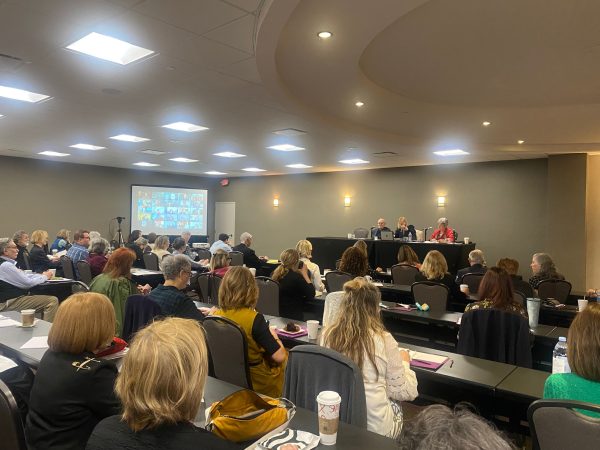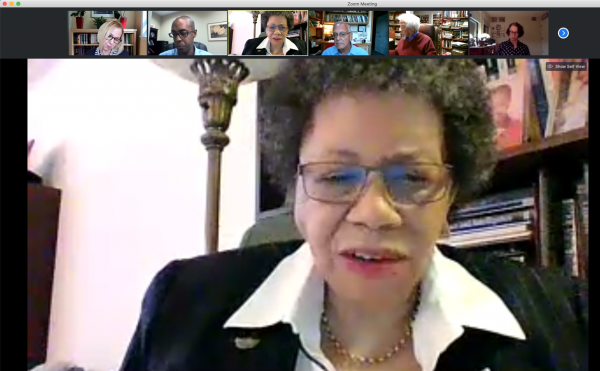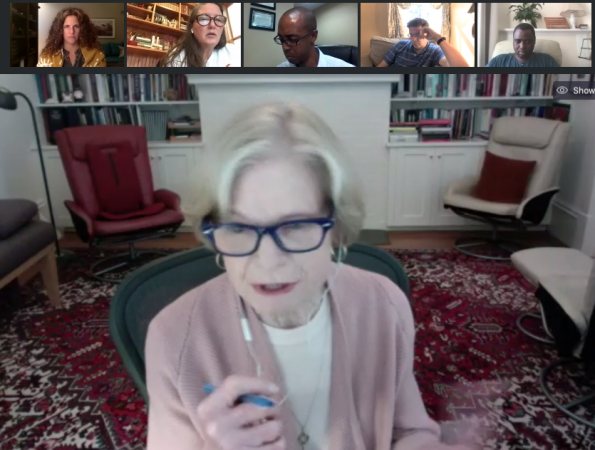Friday September 10, 2024, noon-2:00 pm ET on Zoom
Jill Scharff
I am sitting at my Zoom screen, along with 341 colleagues each at their own computer stations, waiting for the IPI Director Caroline Sehon to introduce Otto Kernberg speaking to us from his country home. Behind him are shelves of decoys, beautiful birds, bringing nature and art into relation with psychoanalysis. Now in his later years, Otto is still vigorous, his extraordinary breadth and depth of knowledge undiminished by age. A wonderful support to David and me and a friend to IPI and IIPT, Otto stood by during our development in the controversial and lonely space of introducing innovative distance education in analytic thinking for psychotherapists and designing analytic training for candidates far from an analytic training center. With Otto’s help and letter of support, IIPT, viewed for years as unacceptable to both APSA and the IPA, was approved as the 33rd APSA institute, during the presidency of Bill Glover. Acceptance for the comparable effectiveness of teleanalysis and distance education is still a problem for the IPA, but IPI with APSA’s blessing is devoted to continuing work online, in person, and in hybrid environments to build a global distance learning psychoanalytic learning community in real time. The Scharff Award Lecture will always be online, always free, and inclusive of all clinicians and students of mental health.

Otto is beginning his lecture “Conflict and Controversy in the Field of Psychoanalytic Technique”. Used to hearing about the dynamic unconscious, we are surprised to hear Otto focus on the everyday functioning of the operational unconscious that is not dynamic. In the first few years of life, the original conflict is between affects evoked in pre-bonding, bonding, attachment, desire, frustration, and separation. Avoiding life-threatening alone-ness, the infant is consciously aware of conflict between love and hate, and then dissociates into opposite libidinal and aggressive segments of experience to defend against the underlying conflict has become unconscious. Surely, Otto is pointing to the drives not as fundamental but as breakdown products of object relations in the early years.
Turning to theories of neural structure, Otto revisits Panksepp’s seven affect systems – Seeking/ Expectancy, Rage/Frustration, Fear/Anxiety, Lust/Sexual Desire, Care/Nurturance, Panic/Grief, and Play – and ties them to the relevant neural organizations and their locations in the brain. The seeking system is intentional, scanning for survival and generating excitement and erotism. When that is thwarted by threat and curtailed freedom, frustration sets in and give rise to rage. The fear response secures proximity to a secure base and protects against destruction by predators. Lust is gender specific, associated with oxytocin release which in men drives assertiveness and sensitivity to visual stimuli and in women favors bonding and values feeling understood in intimate relations. Panic/Grief responses are stimulated in terror of separation from mother, in situations of social rejection and threats of disaffiliation. The play of childhood become the social joy of adulthood. These affect systems in the limbic system irradiate to the prefrontal cortex where they acquire their content and cognitive meaning and are integrated in perception, memory, imagination, introspection, and self-awareness. Each affect is experienced in relation to the affects of others, and so there develops an image of the self, the other and the affects that connect them in life and are built into psychic structure as internal object relationships. Where there are heightened contradictory affects and symbolization is weak, lack of cortical control releases a diffuse trauma response.
This takes us to a section on clinical technique, beginning with Freud’s free association, evenly suspended attention, and neutrality (in which feelings of abandonment are not gratified but are analyzed) and Bion’s being without memory and desire. With these in place, the analyst is in a position of concerned objectivity from which to stay out of (or recover from) conflicts, observe transference displacements into the outer world, and transform countertransference into transference analysis and interpretation of unconscious object relationships, thereby helping the patient move between dyadic and triadic situations. Otto reviews specific foci for analysis – dreams, repetition compulsion, somatization, negative therapeutic reaction based in unconscious guilt and envy, and analysis of the analytic field. He pauses to warn against the use of cognitive, emotional and environmental supportive measures because those interfere with reaching primitive levels of experience, so essential to recovery. The termination phase takes us back firstly to paranoid-schizoid anxieties then to depressive operations, stimulated by imminent loss of the analytic relationship, and so analysis of the termination is the final effort in analysis of the analytic field. Moving from psychoanalysis to psychotherapy, Otto mentions his specialty, the treatment of personality disorders, for which he has developed his signature method of Transference Focused Psychotherapy, with attention to transference specific to each type of personality disorder.
We are covering a lot today, and people are lining up in with electronic hands in their Zoom windows to ask another question, but the time is coming to a close. Otto’s exposition so freewheeling, the grasp of his knowledge so wide and the thrust so deep, that there is no way to capture it fully in these few words— you had to be there! Suffice it to say, thank you, Otto, for an amazingly erudite lecture and generous discussion of contemporary conflicts in psychoanalysis.




